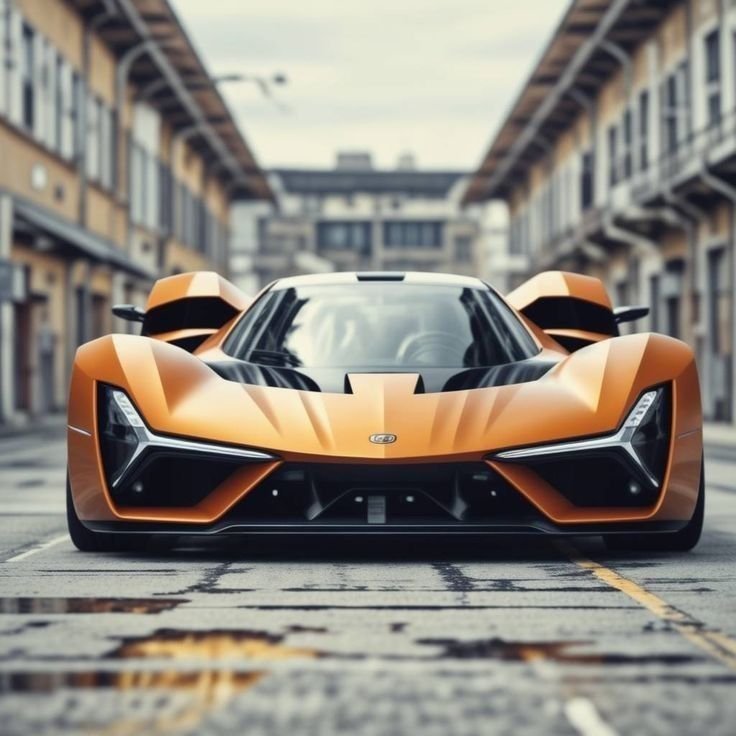
In recent years, the global automotive industry has seen a dramatic shift towards electric vehicles (EVs), driven by environmental concerns, regulatory pressure, and advancements in technology. Many car manufacturers, including Volvo, set ambitious targets to transition to fully electric fleets. However, recent announcements from Volvo, Ford, and General Motors suggest that this transition is facing unexpected hurdles. Volvo, in particular, has made headlines by abandoning its target to produce only fully electric cars by 2030, citing changing market conditions and challenges in the business climate for EVs. This article explores the reasons behind this strategic shift, the factors influencing the EV market, and the implications for the future of the automotive industry.
Volvo’s Initial Ambitions and the Shift in Strategy
Volvo has long been recognized for its commitment to sustainability and environmental stewardship. In 2020, the Swedish carmaker, which is majority-owned by Chinese automotive giant Geely, made a bold declaration: by 2030, it would produce only fully electric vehicles. This ambitious target was in line with Volvo’s image as a leader in safety and sustainability, and it positioned the company as a pioneer in the global transition to electric mobility.
However, Volvo recently announced that it would not meet this target, stating it now expects to sell some hybrid vehicles by 2030. The company blamed changing market conditions, including a slowdown in demand for EVs in major markets and the imposition of trade tariffs on EVs made in China, for its decision to adjust its strategy. Despite this change, Volvo still aims for at least 90% of its output to be electric cars or plug-in hybrids by 2030, while acknowledging that the transition to electrification will not be linear.
Factors Influencing Volvo’s Decision
- Sluggish Market Demand for EVs: One of the primary reasons behind Volvo’s decision to adjust its strategy is the declining demand for EVs in certain major markets. According to the European Automobile Manufacturers Association, registrations of EVs across the European Union dropped by nearly 11% in July. This decline in demand has been attributed to several factors, including the slow rollout of charging infrastructure, the withdrawal of consumer incentives, and ongoing concerns among consumers about the practicality and affordability of EVs.
- Economic and Geopolitical Factors: Volvo’s reliance on factories in China has also impacted its EV strategy. As the company is majority-owned by Geely, a Chinese car giant, it faces tariffs on imports of Chinese-made EVs in Europe and North America. Recently, Canada announced a 100% tariff on imports of China-made electric vehicles, following similar moves by the US and the EU. These tariffs have been imposed amid accusations from Western countries that China is subsidizing its EV industry, giving its carmakers an unfair advantage. China has rejected these allegations, labeling the tariffs as “discriminatory.” These trade tensions and the resulting tariffs have created uncertainty for companies like Volvo, which rely on China for manufacturing.
- The Cost Factor: The cost of producing electric vehicles remains significantly higher than that of traditional internal combustion engine (ICE) vehicles. Despite advancements in battery technology and economies of scale, the high price of raw materials, such as lithium, cobalt, and nickel, which are essential for EV batteries, continues to drive up costs. Anna McDonald, an independent equity analyst, highlighted that electric cars are still more expensive than their ICE counterparts. Furthermore, tariffs on Chinese-made EVs mean that vehicles must be produced outside of China, which is more expensive and adds to the financial burden on manufacturers.
- Consumer Hesitancy: Consumer hesitancy to fully embrace EVs also remains a significant challenge. The withdrawal of subsidies that governments initially provided to encourage electric car purchases has dampened demand. McDonald noted that consumers are still worried about charging infrastructure and the availability of charging stations, which remain insufficient in many regions. Additionally, concerns about range anxiety, the longevity of battery life, and the higher upfront costs of EVs continue to deter many potential buyers.
The Broader Impact on the Automotive Industry
Volvo is not alone in reconsidering its EV strategy. Other major carmakers, including General Motors and Ford, have also scaled back their EV ambitions. Last month, Ford announced that it was scrapping plans for a large, three-row, all-electric SUV and postponing the launch of its next electric pickup truck. General Motors, too, has been cutting its EV production goals over the past year. These developments highlight a broader trend in the automotive industry, where companies are becoming more cautious about their EV targets amid market uncertainties.
- Regulatory and Market Challenges: The decision by carmakers like Volvo, Ford, and GM to scale back their EV ambitions reflects a recognition that the path to full electrification is fraught with challenges. While governments worldwide are pushing for stricter emissions regulations and setting deadlines for banning ICE vehicles, the lack of consistent and adequate policy support, such as subsidies and incentives, is creating uncertainty in the market. Moreover, the slow pace of developing a robust EV charging infrastructure in many regions is hampering the adoption of EVs by consumers.
- The Role of Trade Tariffs: Trade tariffs on Chinese-made EVs have further complicated the market dynamics. China is a major player in the global EV market, not just in terms of manufacturing but also in supplying critical components, including batteries. Tariffs imposed by the US, EU, and Canada on Chinese-made EVs have raised the cost of importing these vehicles, making them less competitive in those markets. As a result, carmakers with production facilities in China, such as Volvo, face increased costs and uncertainty, prompting them to reconsider their strategies.
- The Importance of Hybrid Vehicles: As companies reassess their EV strategies, many are placing greater emphasis on hybrid vehicles as a transitional solution. Volvo, for instance, now expects at least 90% of its output to consist of electric cars and plug-in hybrids by 2030, with the possibility of selling a small number of mild hybrids — more conventional vehicles with limited electrical assistance. This shift reflects a pragmatic approach, recognizing that hybrids offer a bridge between ICE vehicles and fully electric cars, allowing consumers to transition gradually while alleviating concerns about range, charging infrastructure, and cost.
- The Cost of Battery Production: One of the biggest challenges facing the EV market is the cost of battery production. While battery prices have been decreasing over the past decade, they still represent a significant portion of the total cost of an EV. The mining and processing of critical raw materials, such as lithium, cobalt, and nickel, are expensive and have environmental and ethical implications. Additionally, geopolitical factors, such as trade tensions and supply chain disruptions, can affect the availability and cost of these materials, further complicating the economics of EV production.
The Future of Electric Vehicles: A Non-linear Transition
While Volvo’s decision to adjust its EV strategy may seem like a setback, it reflects a broader understanding that the transition to electric mobility will not be linear. Jim Rowan, CEO of Volvo, emphasized that the company remains committed to an electric future but recognizes that “customers and markets are moving at different speeds.” This sentiment is echoed by other carmakers who are also navigating the complexities of transitioning to electric fleets in a rapidly changing market.
- The Need for Infrastructure Investment: One of the critical factors that will determine the pace of the transition to EVs is the development of charging infrastructure. Governments and private companies must invest significantly in expanding and upgrading charging networks to meet growing demand. Inadequate charging infrastructure remains one of the biggest barriers to EV adoption, particularly in regions with sparse coverage.
- The Role of Policy and Incentives: Policy support and incentives will play a crucial role in shaping the future of the EV market. Governments need to provide consistent and predictable incentives to encourage consumers to switch to electric vehicles. This could include tax credits, subsidies, and other financial incentives and support for developing a robust charging infrastructure. Additionally, governments must collaborate with industry stakeholders to address supply chain challenges, including securing access to critical raw materials and promoting sustainable mining practices.
- Consumer Education and Awareness: Increasing consumer awareness and education about the benefits of EVs is another essential component of the transition. Many consumers still have misconceptions about EVs, including concerns about range, charging times, and the overall cost of ownership. Automakers, along with governments and industry organizations, need to invest in campaigns to educate the public about the advantages of EVs and the progress being made in addressing these concerns.
- Advancements in Technology: Technological advancements will also be key to driving the adoption of EVs. Continued innovation in battery technology, such as the development of solid-state batteries, could lead to significant improvements in energy density, charging speed, and overall performance. Furthermore, advancements in vehicle design, lightweight materials, and autonomous driving features could enhance the appeal of EVs to a broader range of consumers.
- Collaboration Across the Industry: The automotive industry’s future will likely involve greater collaboration among carmakers, technology companies, and government bodies. Partnerships and joint ventures can help share the costs and risks associated with developing new technologies and infrastructure. For instance, automakers can work together to create standard charging solutions, develop battery recycling programs, and promote sustainable practices across the supply chain.
Volvo‘s decision to adjust its EV strategy is a reflection of the complex and evolving landscape of the automotive industry. While the company remains committed to an electric future, it acknowledges that the path to full electrification will not be straightforward. Market demand, economic factors, geopolitical tensions, and consumer hesitancy all contribute to a challenging environment for carmakers.
However, this recalibration does not signal a retreat from the industry’s electrification ambitions. Instead, it represents a more nuanced approach to navigating the transition, balancing short-term realities with long-term goals. The future of the automotive industry will depend on a combination of factors, including investment in infrastructure, policy support, technological innovation, and consumer education. As the world continues to grapple with the urgent need to address climate change, the shift towards electric vehicles, though non-linear, remains a critical component of the broader effort to create a sustainable and resilient future.
Looking Ahead: What to Expect
As the industry adapts to these new realities, we can expect continued fluctuations in strategy from carmakers as they respond to evolving market conditions and technological advancements. While the road to a fully electric future may be winding, it is clear that the destination remains the same: a cleaner, greener, and more sustainable automotive industry. Volvo, along with other major players, will likely continue to explore various pathways to achieve this goal, balancing innovation with pragmatism in the face of a rapidly changing world.
ALSO READ: The Role of 3D Printing in Future Automotive Design






